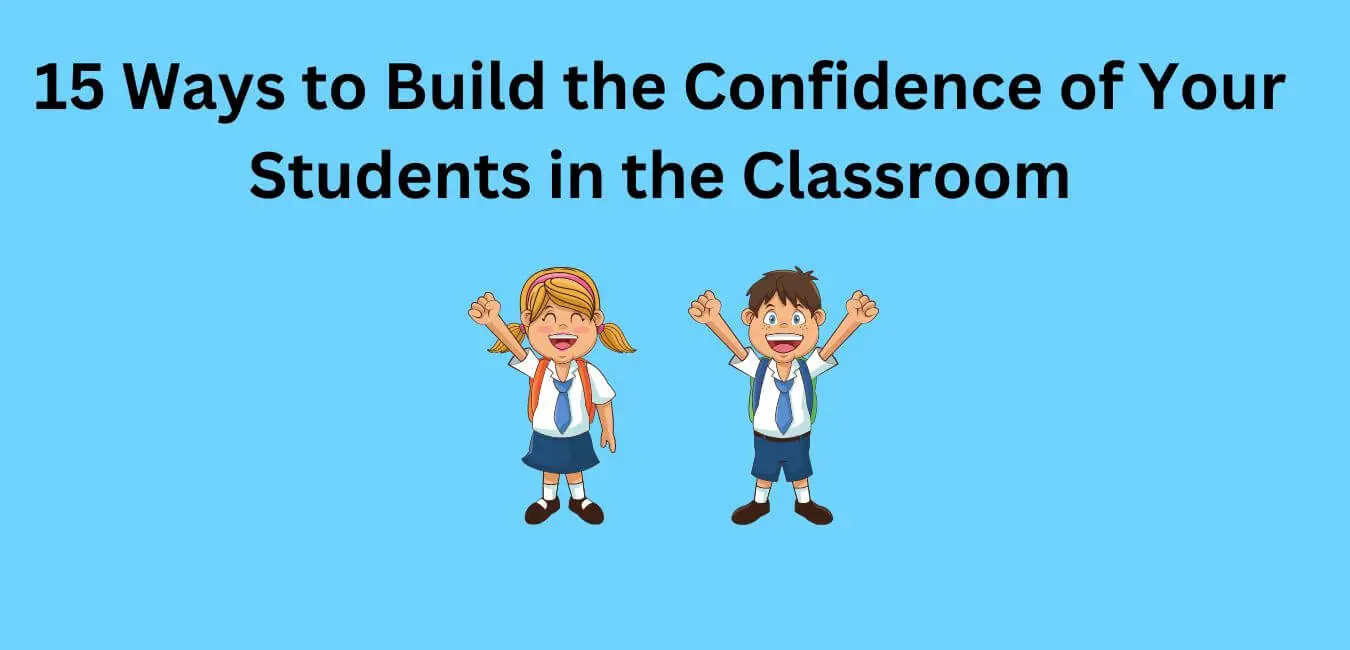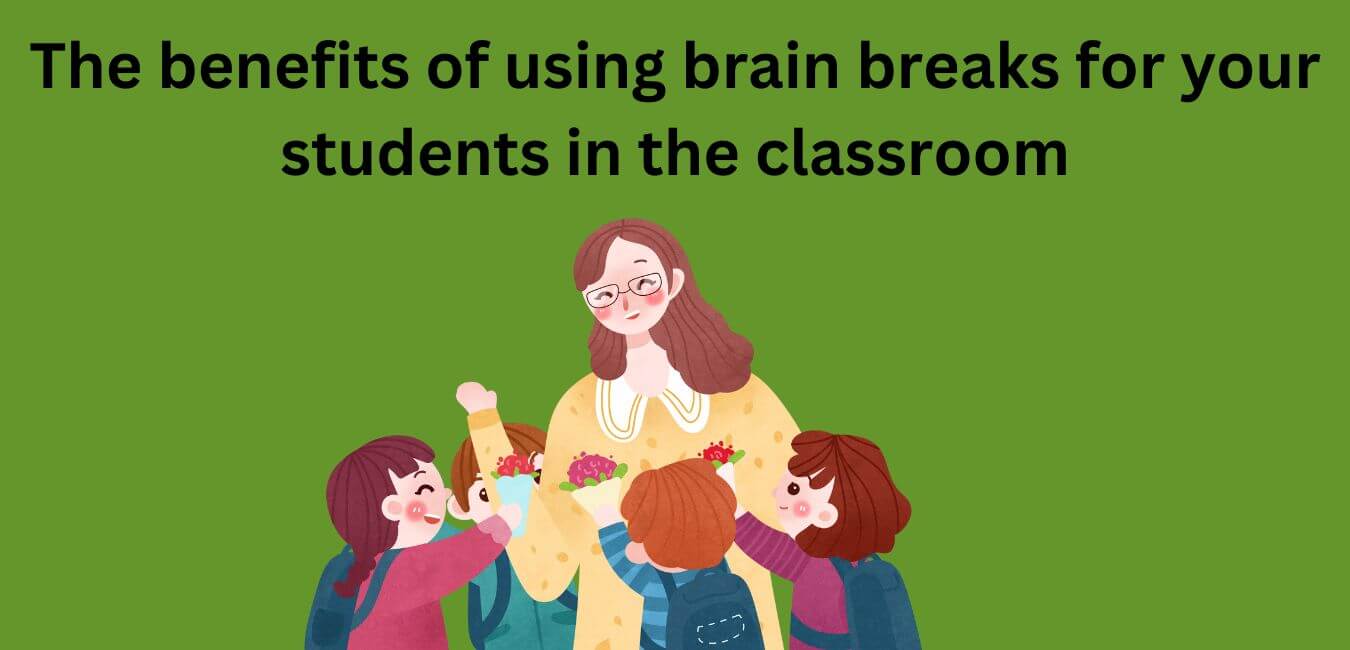Confidence is crucial for success in school and beyond, but unfortunately, many students struggle with self-assurance in the classroom.
Luckily, there are numerous ways that educators can help build the confidence of their students. From making eye contact and using positive body language to focusing on individual strengths and providing valuable feedback, teachers can create a supportive and empowering environment that encourages their pupils to believe in themselves.
In this article, we’ll explore 15 practical strategies that teachers can use to boost their students’ confidence and promote a more productive and positive learning environment.
These techniques are tailored to a range of age groups and learning styles, and can easily be incorporated into any classroom setting. So let’s get started.
Tips to Promote Your Students’ Confidence
The following are some of the strategies I found to be helpful in developing the confidence of students in the classroom:
1. Offer Opportunities for Discussion
When it comes to building the confidence of your students in the classroom, offering opportunities for discussion is a great place to start.
This encourages students to express their thoughts and opinions and also provides them with an opportunity to learn from each other.
Discussions can be held in small groups or as a whole class and can be structured in a variety of ways.
Asking open-ended questions is one way to ensure that the conversation remains stimulating and engaging.
This can help students become more comfortable speaking up in class, which can help build their confidence in their own ideas and opinions.
2. Make Learning Fun
Having the confidence to take risks and try new things is essential for learning.
Making learning fun can help reduce student frustration and confusion.
Adding classroom games, informal group projects, and student-guided activities to the learning environment can make it more enjoyable for students and help them feel like they are able to succeed.
Additionally, providing students with choices can make them feel empowered in their learning process.
This could include allowing them to choose how they demonstrate mastery of a skill or what activities they would like to complete.
Allowing students to make decisions increases their confidence in their own abilities and gives them a sense of control over their learning.
3. Certificate of Accomplishment
A Certificate of Accomplishment is a great way to boost the confidence of your students.
It is important to recognize the hard work and dedication of your students.
A certificate of accomplishment can be given as a reward for completing a task or project or simply as a way to celebrate their hard work and dedication in class.
This will help them feel appreciated and recognized for their efforts, which will build their confidence and encourage them to keep striving for excellence.
4. Build a Classroom Climate That Supports Each Student
Creating a positive classroom climate is essential for student success, and building the confidence of your students is a key part of that.
To create an environment that supports each student, it is important to make sure that the classroom is welcoming and inclusive.
Showing an interest in your students’ lives and getting to know them on a personal level is a great way to build rapport and foster a sense of trust.
Additionally, rewarding students for their accomplishments, offering meaningful feedback, and providing relevant materials are all important steps in creating a classroom climate that supports each student.
5. Create a Secure Environment for Learning
One of the most important ways to build student confidence in the classroom is to create a secure environment for learning.
This means providing clear routines and procedures, addressing students’ individual needs, and establishing a sense of order.
It also means creating a caring, warm, and safe learning environment and community.
To do this, don’t make classrooms suffocating; allow ventilation of ideas and encourage communication.
Moreover, it is important to foster an environment of emotional safety in school where students feel secure expressing their emotions.
Finally, set clear expectations of respect between students to ensure they feel safe in the classroom.
6. Peer Learning Groups
In addition to the above strategies, peer learning is an effective way to help students build their confidence in the classroom.
Peer learning involves students working in small groups towards a common goal in order to increase their meaningful understanding of class material.
It reinforces learning when students have the opportunity to teach and learn from one another.
Cooperative learning procedures have also been shown to enhance student self-confidence and motivation, so it is important to make sure that students are getting the opportunity to work together.
We need to know how we can make both online and face-to-face group work more successful.
7. Encourage and Praise Effort
Praise is an important tool for building student confidence in the classroom.
Praise for effort encourages students to keep trying and gives them a sense of accomplishment when they achieve their goals.
It also helps students recognize their successes and build self-esteem.
One of the best ways to praise students is to focus on their effort rather than the outcome itself.
When students receive recognition for the effort they put into an activity, it reinforces the idea that hard work pays off and encourages them to keep striving for excellence.
8. Provide Relevant and Interesting Materials
Providing relevant and interesting materials is a great way to engage your students and help them develop their confidence in the classroom.
By giving them the opportunity to explore different topics, they can gain a better understanding of the material and become more confident in their knowledge.
To make this process more effective, you can incorporate visuals and diagrams into your lessons, which can help students better grasp the concepts being taught.
By providing interesting and relevant materials, your students will be better able to engage with the material and increase their understanding of the subject matter, thus boosting their confidence.
9. Help Students Set Goals
Setting and achieving goals can be a powerful way to build confidence in students.
Feeling a sense of accomplishment and success with the first few goals they set is important to help students feel ready to set bigger goals in the future.
Positive affirmation day, praising and acknowledging accomplishments, and teaching them how to set and achieve goals can help students gain the confidence they need to succeed.
Make personal goal-setting (academic, emotional, social, etc.) a regular activity with your students to strengthen their intrapersonal skills and motivate them.
Research suggests that encouraging students to set their own goals can help with their academic performance and build their confidence in themselves.
Setting and pursuing learning goals also builds confidence that their efforts can lead to important outcomes.
10. Develop Self-Awareness
Self-awareness is a crucial part of building confidence. It gives students the power to recognize their thoughts and feelings, and understand how they impact their behavior.
One way to develop self-awareness in the classroom is to ask students to create self-portraits, design flags, or create puzzle pieces that represent their emotions.
You can also have them answer questions about themselves and their goals.
Additionally, teaching students how to identify their emotions can help them understand why they feel certain ways and how to best manage them.
Furthermore, engaging in activities like journaling or writing stories about themselves can help foster self-awareness.
11. Encourage Risk Taking
Risk-taking can be a great way for students to gain confidence. It encourages students to try new things, and reach outside their comfort zone.
It is important to create an environment where it is safe to take risks, and where mistakes are seen as learning opportunities.
Encourage students to think of creative solutions to problems, and reward them for their efforts.
Create an environment where taking risks is acceptable and not discouraged. Let your students know you believe in them and support them in their efforts.
12. Assign Leadership Roles
Encouraging students to take on leadership roles helps them learn and grow in confidence.
Assigning leadership roles, such as class leader, tutor, or even just assigning students to work in pairs, can help them build their confidence and self-esteem.
Giving students the opportunity to lead others can help them develop the skills they need to be successful in the classroom and beyond.
It also gives them a sense of responsibility, which can help them become more independent and confident in their own abilities.
13. Help Students Develop Self-Esteem
As teachers, we play a key role in helping our students develop self-esteem. Self-esteem is the foundation of confidence and is essential for success in the classroom and beyond.
We can help our students build self-esteem by encouraging them to take risks, embrace failure, and model body acceptance.
We can also provide meaningful feedback and celebrate their successes.
Eating a healthy diet, getting enough exercise, and helping others are all great ways to boost self-esteem.
Lastly, we can help our students set realistic expectations and explore ways to achieve their goals.
14. Incorporate Movement into Learning
Incorporating movement into learning is a great way to build the confidence of your students in the classroom.
Movement-based activities can help students become more engaged and focused.
Writing a variety of movement-based activities, such as frog jumps, jumping jacks, and yoga stretching, onto small pieces of paper can be a great way to get your students to gain control of their behavior and engage with the material.
Brain breaks for older students can also be used, such as waves, starting at one end of the room with students standing and raising their arms.
This will help to foster on-task behavior, increased collaboration, and greater self-confidence.
Don’t overdo it, though—it is important that these activities are well-timed and don’t take away from the main lesson plan.
15. Encourage Self-Reflection
Self-reflection is a powerful tool for fostering student confidence. It allows students to reflect on their own work and assess their strengths and weaknesses.
Encourage students to stay curious and ask questions, as this helps them learn from their mistakes and think more deeply about the material.
Provide them with opportunities to share their thoughts and feelings about the material with their peers, as this helps to create an atmosphere of trust and open communication.
Finally, help them develop strategies for self-improvement so that they can become more confident in the classroom.
Conclusion
Thanks for joining me on this journey toward building confidence in your students. Remember, it’s a journey that takes time and patience, but the rewards are immeasurable. I hope the tips and strategies we’ve discussed will help you create a classroom environment where your students feel empowered to take risks and tackle challenges. Let’s continue to support each other and our students on this journey of growth and self-discovery.
















